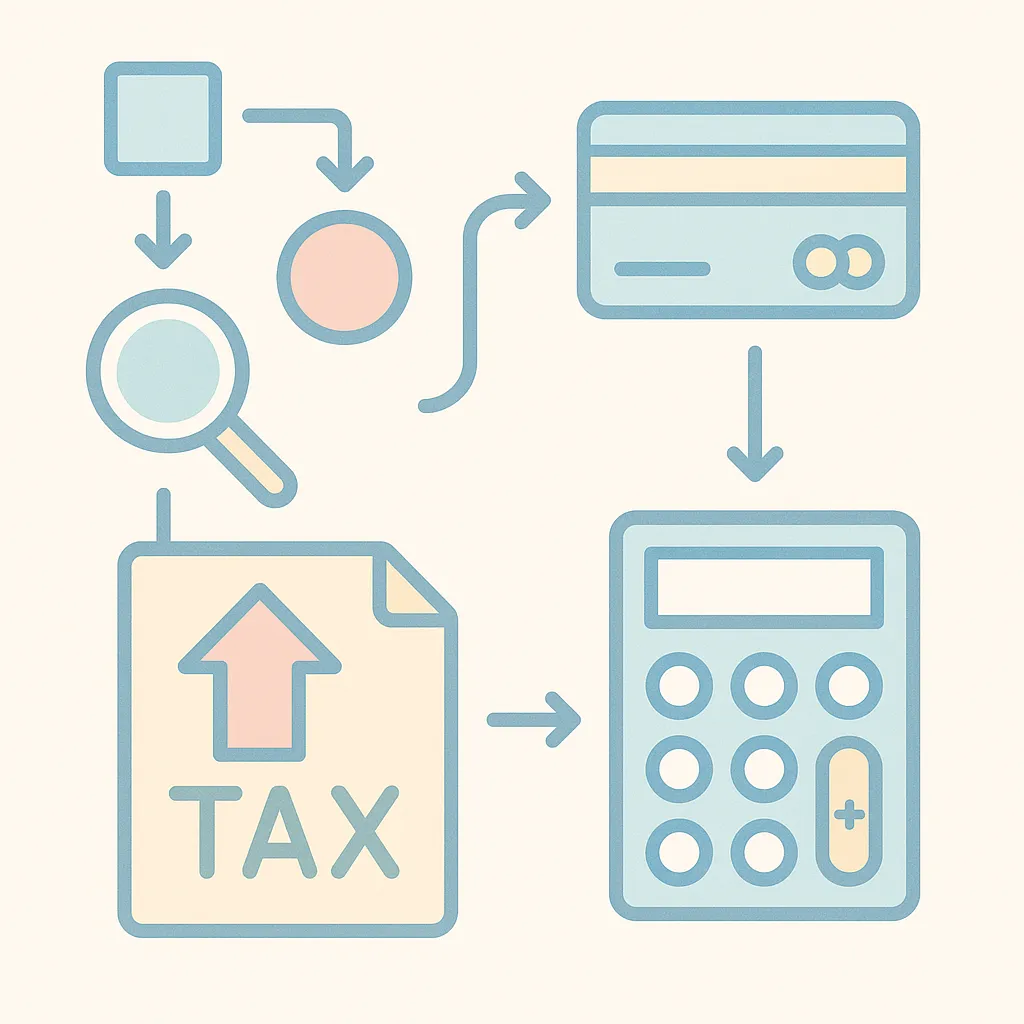Progressive Tax Systems: Marginal Vs. Effective Rates Demystified - Part I
1. Marginal vs. Effective: seeing the layers inside a progressive tax code
1. What is the marginal tax rate?
The marginal tax rate is the percentage that applies only to the next rupee or dollar you earn, not to every rupee you have already earned. In a progressive system, income is sliced into brackets and each slice is taxed at its own rate, so taxpayers effectively face several small “mini-taxes” that add up. For example, under India’s new regime for Assessment Year 2025-26, income above ₹15 lakh is taxed at 30 percent, while the slice between ₹12 lakh and ₹15 lakh is taxed at 20 percent [1].

Likewise, a U.S. salaried worker whose top bracket is 37 percent only pays that rate on the dollars that fall inside the top band, not on the entire salary [2].
Because promotions, overtime, or entrepreneurial income usually push money into higher brackets one slice at a time, the marginal rate becomes a powerful planning tool: it tells you how much of the next bonus will stay in your pocket after federal (and often state) deductions are finished [3]. Understanding this “last-rupee tax” helps workers decide whether extra income, salary-sacrifice schemes, or tax-saving investments make sense.
2. Calculating India’s effective tax rate
By contrast, the effective tax rate (ETR) divides the total tax paid by total gross income, converting a progressive ladder into a single-number snapshot of a person’s true burden. Suppose a resident Indian earns ₹11 lakh in FY 2024-25 and opts for the new regime. The first ₹3 lakh is tax-free; the next ₹4 lakh is taxed at 5 percent (₹20,000); the slice from ₹7 lakh to ₹9 lakh at 10 percent (₹20,000); and the last ₹2 lakh at 15 percent (₹30,000).
Total tax before cess and surcharge equals ₹70,000, producing an ETR of roughly 6.4 percent (₹70,000 ÷ ₹11 lakh) [4]. Because deductions under sections 80C to 80U and rebates under section 87A directly reduce either taxable income or tax payable, the ETR often falls far below a taxpayer’s highest marginal bracket.
Analysts therefore watch movements in ETR when gauging how budget proposals — such as the April 2025 decision to keep the basic exemption at ₹3 lakh — affect household purchasing power and savings behaviour. Companies use the same concept at the entity level to benchmark global tax competitiveness and to model minimum-tax rules arising from the OECD Pillar Two agreement.
1. ETR can hit zero!
Thanks to the section 87A rebate, resident Indians with taxable income up to ₹7 lakh pay no income tax under the new regime, making their effective rate 0 percent despite marginal rates of 5-10 percent on part of their income .
2. Carving away your Indian tax bill: three tools every filer must know
1. The no-paperwork standard deduction
India’s standard deduction is the epitome of “set-and-forget.” For salaried employees and pensioners it is applied automatically once income is disclosed, so no receipts or proofs are required. Under the old regime the amount is frozen at ₹50,000, but the Union Budget 2024 pushed the figure to ₹75,000 for anyone who opts into the new, default regime from FY 2024-25 (AY 2025-26) onward[5].

Although the deduction merely trims your taxable income—not the tax itself—it can still shave up to ₹22,500 of tax (plus cess) for someone in the 30 % slab.
Unlike itemised breaks, the standard deduction survives job changes within the year: you claim one flat amount against the composite salary you report[6]. If you switch from the new to the old regime in a later year, the deduction simply reverts to ₹50,000, illustrating why regime selection is a year-by-year strategic choice.
2. Itemised deductions: paperwork with bigger pay-offs
Taxpayers who remain in the old regime can stack a menu of “itemised” deductions, each of which demands evidence but can dramatically shrink taxable income. Key sections include:
- 80C – up to ₹1.5 lakh for investments such as PPF, EPF, ELSS, NSC and life-insurance premiums[7].
- 80CCD(1B) – an extra ₹50,000 for voluntary NPS contributions[8].
- 80D – medical-insurance premiums (₹25,000 for self/family, ₹50,000 if parents are senior citizens).
- 24(b) – up to ₹2 lakh of interest on a self-occupied home loan.
While each section has its own ceiling, a disciplined investor can shelter well over ₹4 lakh of income.
Record-keeping is crucial: Form 16 seldom captures voluntary ELSS or NPS contributions, and insurers issue 80D certificates only on request.
Because the new regime disallows these deductions, taxpayers must weigh the certainty of lower headline rates against the potential windfall of itemising—often by plugging numbers into an online calculator before 31 March each year.
3. Tax credits: rupee-for-rupee relief
Deductions merely narrow the tax base; credits wipe tax out directly. India’s flagship credit is the Section 87A rebate. For AY 2025-26 it erases up to ₹25,000 of calculated tax for residents with taxable income not exceeding ₹7 lakh in the new regime, and up to ₹12,500 for incomes up to ₹5 lakh under the old regime[9].
The credit applies even to tax arising from short-term equity gains, yet the government’s ITR utility has not been auto-applying it—requiring filers to enter the claim manually[10].
Other credits include the foreign-tax credit under Rule 128 and MAT credit for companies, both of which offset Indian tax on income already taxed overseas or in prior years. Unlike deductions, unused credits may carry forward, giving them staying power in long-term tax planning.
1. Pro-tip
The Income-tax Department’s e-filing utility silently ignores Section 87A when part of your income is short-term market gains. Tax experts recommend typing “₹25,000” into the rebate field before submitting; the system accepts it and your liability drops to zero—saving you from an avoidable ₹25,000 surprise.
References
- [1] Income Tax India – Tax slabs AY 2025-26
- [2] WSJ – Why Your Top Tax Rate Isn’t What You Actually Pay
- [3] Investopedia – Tax rate vs. tax bracket explained
- [4] Income Tax India – Tax slabs AY 2025-26
- [5] Hindustan Times report, 23 July 2024
- [6] ClearTax guide to standard deduction
- [7] ET Wealth, 2 Feb 2024
- [8] ClearTax list of 80-series deductions
- [9] ClearTax guide to Section 87A rebate
- [10] Times of India, 1 Aug 2025



